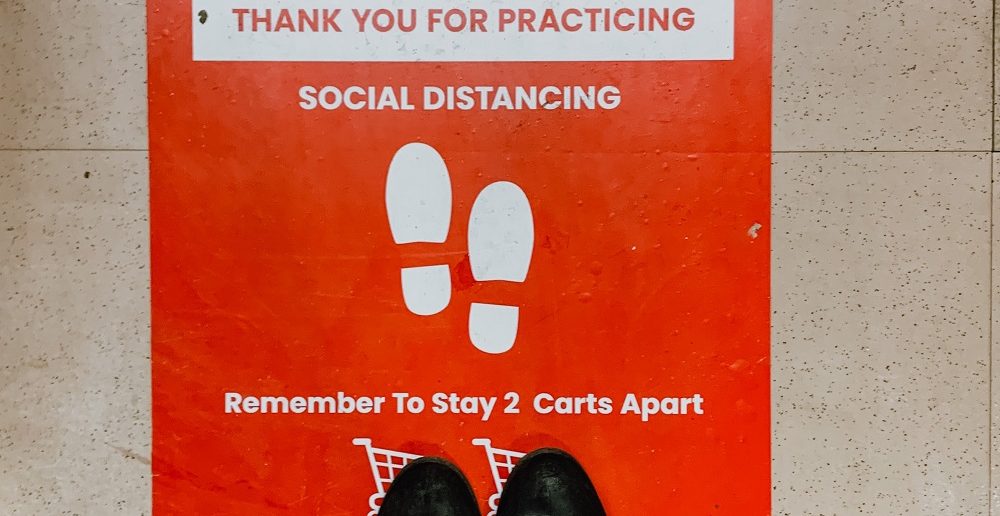Few of us expected to experience problems with retailers during the lockdown. Most people have, after all, been happily buying online for years. Why would anything change just because some physical shops closed for a while, or some people could not go out? However, the challenges went a bit deeper than we expected.
First, there was a huge expansion in online demand, especially for necessities. Few retailers were equipped to cope. Some grocery websites reported queues of over 200 people. Others simply shut down. Later, seed and "grow your own" suppliers were similarly overwhelmed. Supermarkets have had to rapidly ramp up capacity for online shopping. They have also sought to manage demand by requesting that people visit stores "if they are able" so that they can reserve online deliveries for the most vulnerable or needy customers.
This approach is very much customer-based. However, it is far from the highly personalised approach or seamless retail experience that has come to be seen as the new normal and an essential part of retail.
Managing demand
There have also been huge changes in demand for particular products or classes of products. Demand has fallen significantly at many of the stores that have closed physical sites, probably because they sell goods that are seen as discretionary purchases. Some companies are reportedly close to calling in the administrators. However, in some product lines, demand has practically exploded. The number of households buying hand sanitizer tripled between January and March 2020. In the week ending March 21, demand in over 20 subcategories grew by 300%. In over 150 more categories, it grew by more than 200%. Panic buying also occurred in some categories of goods.
Since then, demand has stabilised – but into a very different pattern. With cafés and restaurants closed, there is far more demand for fresh food from grocery stores. Demand is now back below the initial panic buying level, but far from the previous norm. The rise in demand for pre-prepared meals has been maintained, for example, alongside tinned vegetables. In the US, cleaning products remain largely out of stock.
Demand planning emerges as a priority
We can predict some likely future patterns from previous health crises, such as the SARS outbreak in China in 2003. First, markets do eventually stabilise, and usually at broadly the same level as before the outbreak. However, the precise "look" of the recovery depends on product types. Essential products see rapid stabilisation – indeed, we are already seeing this for many products in Europe. "Stockpile-able" goods, such as cleaning products, tend to see a dip for a longer period after an initial period of demand. This is until most people have used up their stockpiled supplies.
Finally, discretionary purchases tend to see a fairly rapid rebound post-crisis. However, there is a danger that we may not see this after COVID-19, especially if the world goes into a serious recession. Signs from China, though, are positive, so we can hope that recovery will be fairly rapid.
Responding to changes with analytics
Retailers can start to respond to these likely changes, supported by analytics. For example, they might adopt machine learning algorithms that can improve demand planning by quickly assessing shifts across each phase of the pandemic and recovery. These algorithms will learn as more data becomes available. Algorithms can also be used to support successful product substitution. This is big business, as supermarket shoppers will tell you. Being able to predict an alternative that will be not just acceptable, but even better, is key to turning a potential retail disaster into a great customer experience.
Supermarkets and other retailers are also finding that logistical challenges are high on their agendas at this time of hugely increased demand for home delivery. Use of route planning and optimising software can maximise the use of vans and delivery lorries, improving the ability to deliver to more customers. It is also essential to have systems that can prioritise vulnerable customers and ensure that they get the deliveries they need. Stores and retailers may also benefit from analytics to better understand customers’ online behaviour – especially now that online is the only option for many businesses.
Finally, there is one other crucial area of analytics activity, especially for retailers already using analytics: recalibrating models. We all know that models are only as good as the inputs. Models need to be rapidly recalibrated with new data to enable retailers to provide better predictions of what is likely to happen next – and be able to respond to it quickly and flexibly.
Join our on-demand webinar at your preferred listening hours: How the retail industry can embrace the new reality in demand, supply and customer experience domains.


